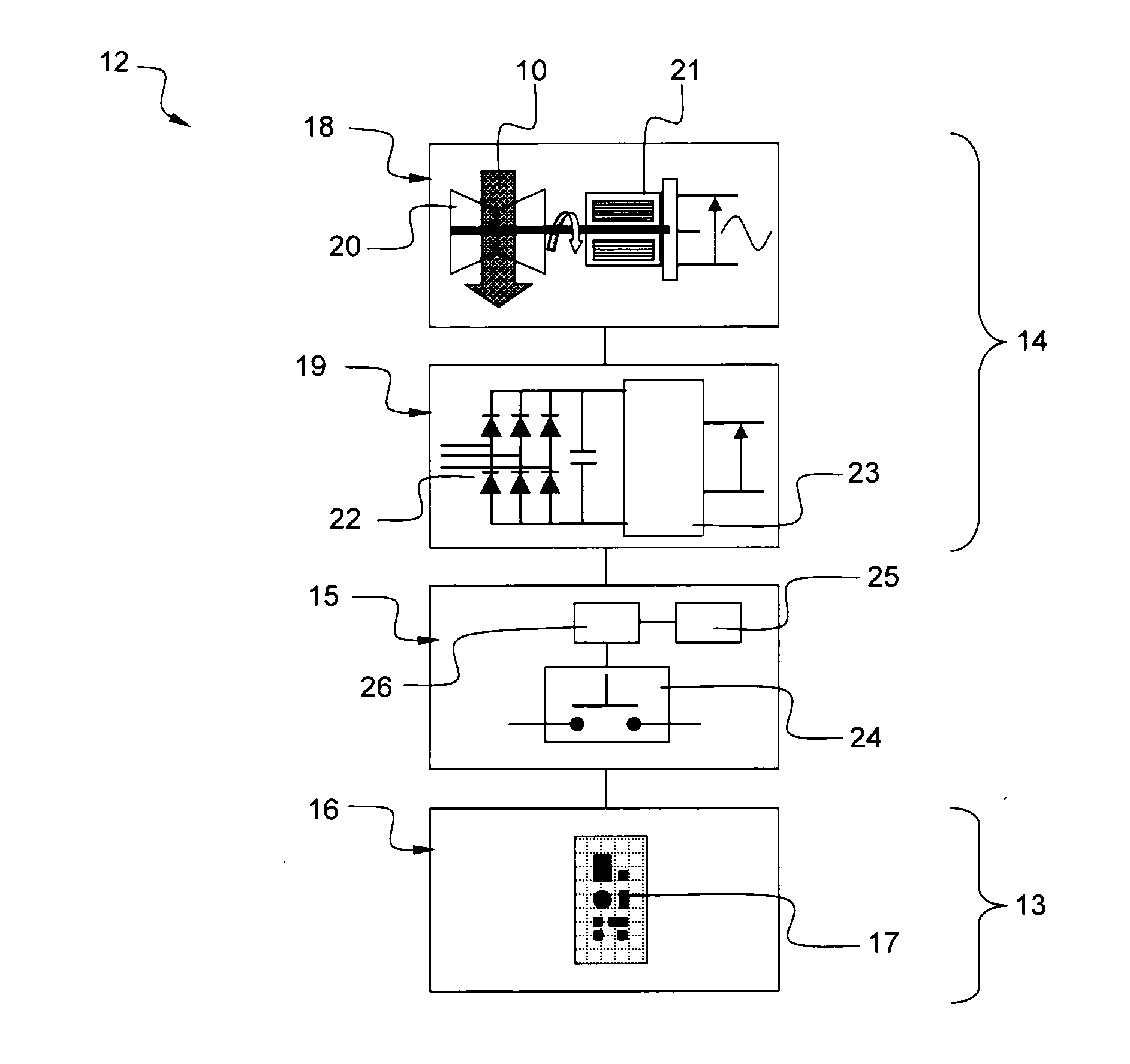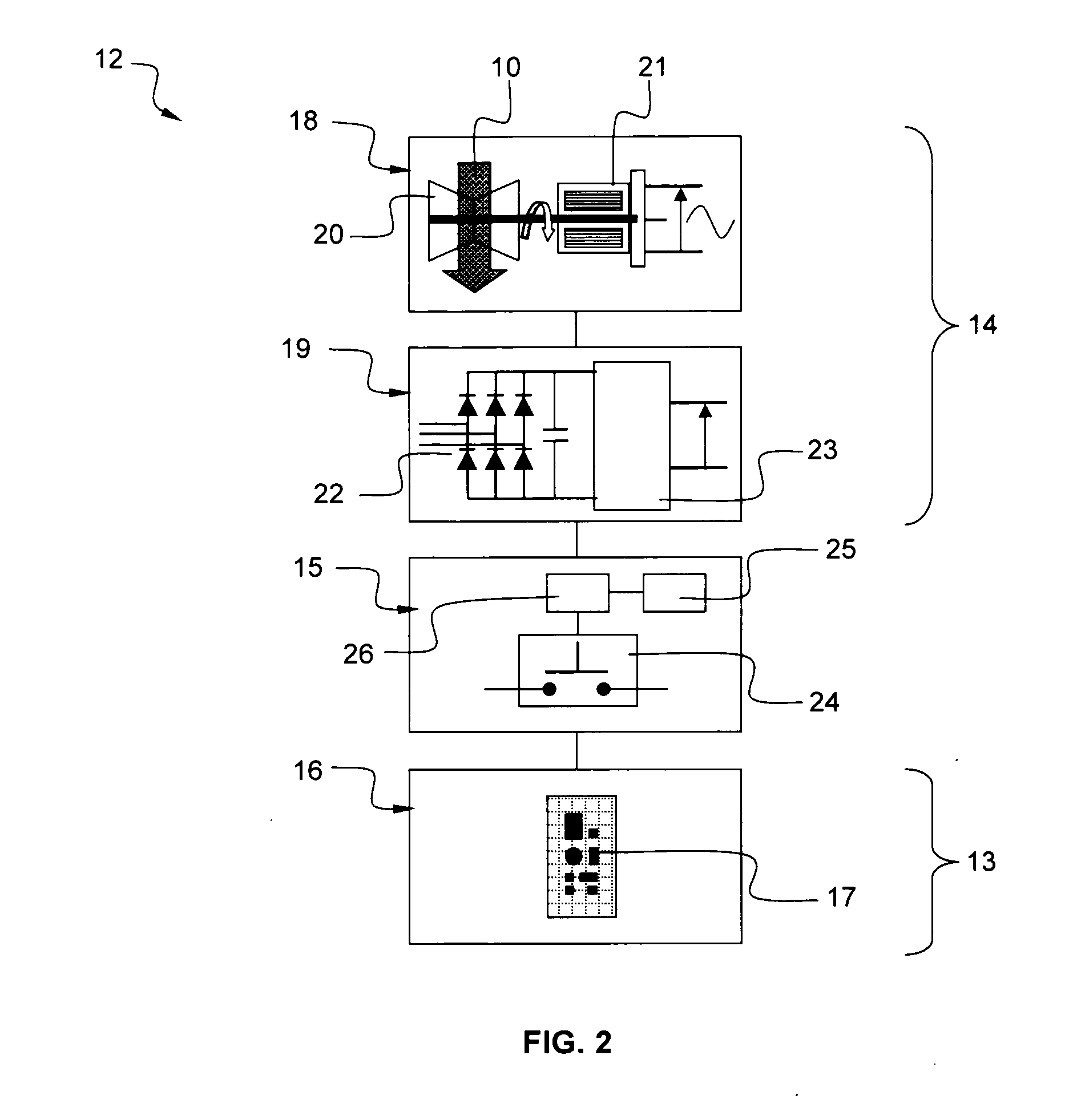Electronic apparatus of a downhole tool
- Summary
- Abstract
- Description
- Claims
- Application Information
AI Technical Summary
Benefits of technology
Problems solved by technology
Method used
Image
Examples
Embodiment Construction
[0021]FIG. 2 is a block diagram schematically representing an electronic apparatus 12 for a downhole tool (9 and 11 shown in FIG. 1). For example, the electronic apparatus 12 may be a part of the logging assembly (11 shown in FIG. 1). The electronic apparatus 12 comprises a first electronic device 13, a second electronic device 14 and a thermally controlled switch 15.
[0022]The first electronic device 13 may comprise a printed circuit board 16 comprising various electronic components 17. For example, the electronic components 17 may be sensors, processors, memories. The sensors may be used to measure properties of the geological formation, the well bore, the drilling fluid, etc. . . . Alternatively, the first electronic device 13 may comprise a plurality of printed circuit board or Multi-chip modules (MCM). The first electronic device 13 operates up to a first maximum operating temperature, for example 200° C. As an example, the first electronic device is implemented by using a stand...
PUM
 Login to View More
Login to View More Abstract
Description
Claims
Application Information
 Login to View More
Login to View More - R&D
- Intellectual Property
- Life Sciences
- Materials
- Tech Scout
- Unparalleled Data Quality
- Higher Quality Content
- 60% Fewer Hallucinations
Browse by: Latest US Patents, China's latest patents, Technical Efficacy Thesaurus, Application Domain, Technology Topic, Popular Technical Reports.
© 2025 PatSnap. All rights reserved.Legal|Privacy policy|Modern Slavery Act Transparency Statement|Sitemap|About US| Contact US: help@patsnap.com



